Clancy Tucker's Blog, page 255
June 22, 2015
23 June 2015 - GONDOR WRITERS' CENTRE

GONDOR WRITERS' CENTRE
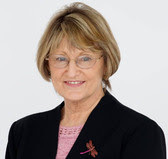
G'day folks,
Today, I present something different. I welcome a good friend of mine who has been one of my biggest supporters - Elaine Ouston. Elaine and colleague, Ron, have recently opened a centre for writers in the hinterland of a beautiful part of Australia. Elaine is not only highly qualified, she is also an author herself, and one of the nicest people in the publishing industry - an absolute gem.
Welcome, Elaine ...
What is the Gondor Writers Centre?
It is a writers retreat located on a quiet country property set in the foothills of the Sunshine Coast hinterland. Here, writers can gather in an inspiring setting to learn how to hone their craft. An exciting group of popular authors will teach them how to be a successful author.
The workshop building is set on 16 acres and surrounded by trees and flowering shrubs. It is a wonderfully relaxing environment, away from the hustle and bustle of the city. The loudest sound we hear most days is the call of the many birds that surround us. Some days we look out the window and find a wallaby grazing on the rise behind the house. They are always in our front paddock. Deer roam the area and often visit. The property has a resident koala population. We rarely see them, but sometimes they come to the trees close to the house. The peace and tranquillity of the property enhances the learning experience.

Why did you call the property Gondor?
I named our writing centre Gondor after the world in The Lord of the Rings. To me that book is the epitome of creativity and even the name inspires me. I hope it will work the same for others.
Tell us how the idea came about?
I was running workshops in suburban Rockhampton, and they were very successful. Many of my students went on to win competitions and become published authors, but mowers next door, noisy traffic, and people shouting out on the street were constant interruptions. I dreamed of having a quiet secluded place where writers could sit in peace and not have their thoughts interrupted by these distractions. When we decided to move closer to Brisbane, we looked for such a place and were lucky enough to find it.

Why do writers need to take courses in writing?
As a publisher and editor, I am always reading manuscripts from aspiring writers. Most of them have a great imagination and an interesting story to tell, but there is much lacking in the writing. To be successful as an author, you have to know how to hook the reader from the first page and keep them glued to the story for the whole book. The ways to do this are skills that can be learned. I saw the need for some reasonably priced workshops to help writers become the best that they could be.
Your new in-house workshops sound fantastic. Can you tell us more?
The workshops cover everything that a writer needs to know. They start at how to develop an idea into a story and continue on to how to get published. As well as this valuable knowledge, many guest authors will share information on their particular genre.
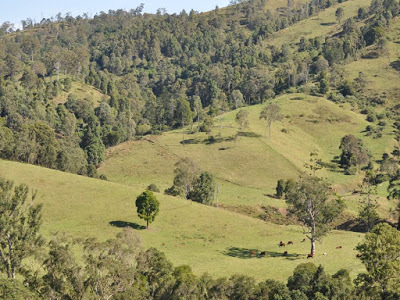
Can you name drop some presenters you have lined up for 2015?
While Ron’s and my workshops cover all technical aspects of writing, I wanted to offer my participants more. I am very lucky to have amongst my friends many amazing writers. When I approached them to come to our centre and share the information they have of their particular genre or knowledge of the industry, they agreed.
The list includes Paul Collins (fantasy creation and world building), Michael Gerard Bauer (writing humour), Marianne de Pierres (How to find and agent), Meredith Costain (writing for early readers/the education market), Aleesah Darlison (picture books), Charmaine Clancy (writing scary stories for children), Annie Seaton (writing romance).
What are you most proud of with this valuable service?
Being able to mentor writers, by helping them learn the craft.
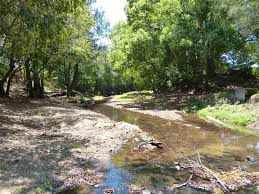
Any other essential resources (besides Gondor Writers Centre) you would recommend for writers/illustrators?
I recommend taking workshops wherever they can to learn the important skills needed, joining a writer’s group in their area and belonging to their state writers’ centre. Also, attending as many writing festival and conventions that they can, to mix with like-minded people and meet the heavyweights in the business.
Do your presenters offer a quick assessment of a 'work in progress?
Some workshop participants have asked if the presenters would do a quick assessment of their 'work-in-progress'. Unfortunately, there is not time for all attendees to be given this privilege, but we have come up with a way around this.
Our future workshops will include an opportunity for 4 lucky winners to have their manuscript assessed by our exciting presenters and one to win a FREE workshop!
Go to the website to see more.
http://www.gondorwriterscentre.com/workshops.html
How can we learn more?

GONDOR WRITERS' CENTRE
Please phone 07 54 981 332 if you have any queries.

Clancy's comment: Mm ... It must be of a very high calibre with presenters like Paul Collins, Michael Gerard Bauer and Aleesah Darlison. I would highly recommend this centre for any aspiring or emerging author, and would be there in a flash, given half the opportunity. Trust me, folks. Nothing better than spending time with colleagues who have already been through the mill. But, even better when it's done in a wonderful environment.
I'm ....

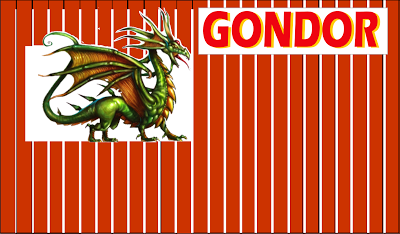
Published on June 22, 2015 01:15
June 21, 2015
22 June 2015 - MELBOURNE IN THE 1930'S

MELBOURNE IN THE 1930'S
G'day folks,
I love old photographs, especially black and white ones. They tell us a lot about life. Here are some great shots of life in the 1930's in Melbourne, Victoria, Australia. No doubt, many of you will appreciate similar images of things in your own country: bikes, hats, suits etc.
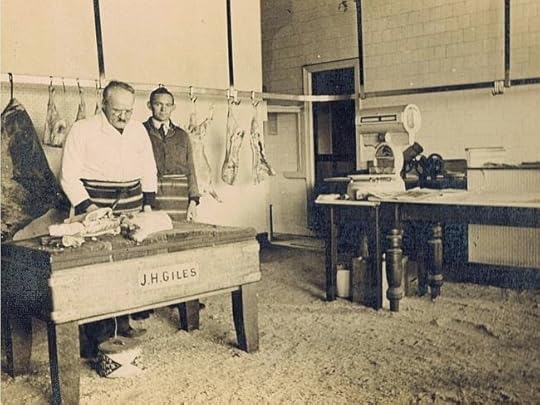

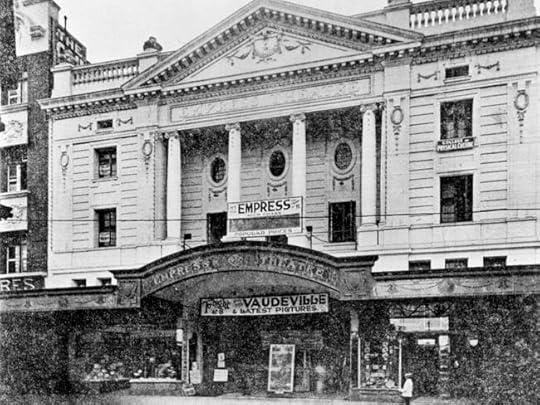
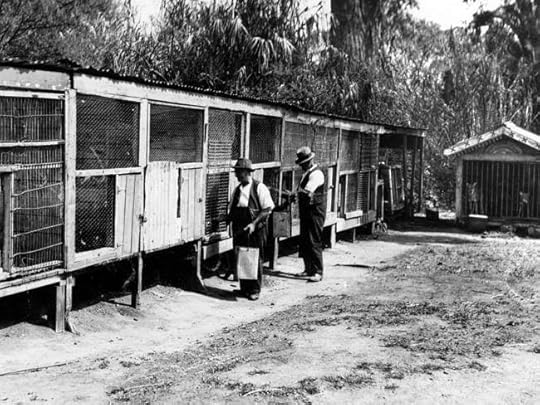


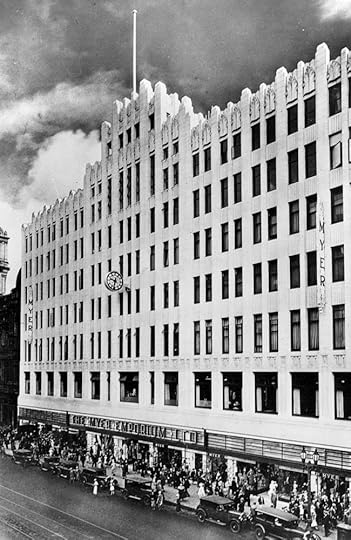

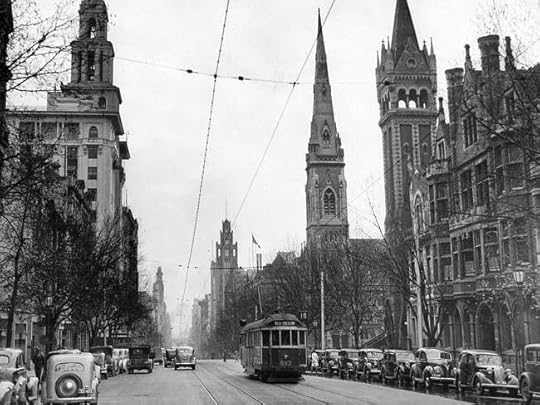
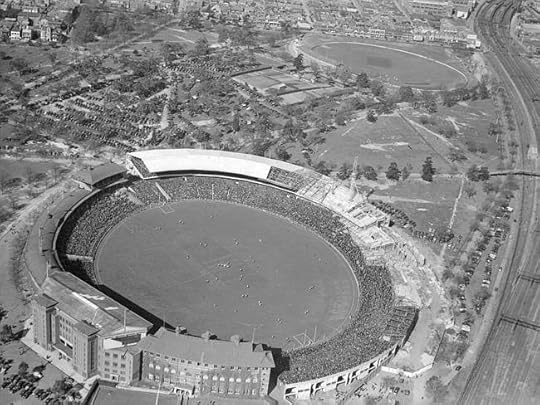
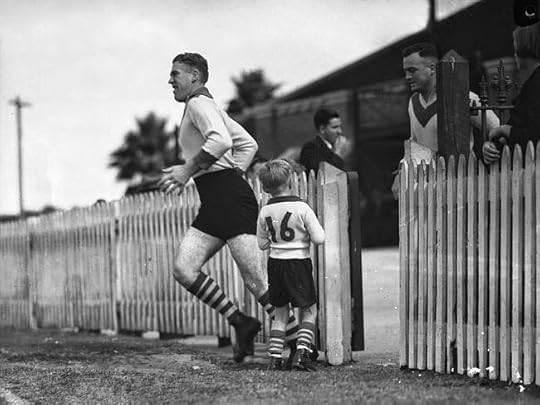
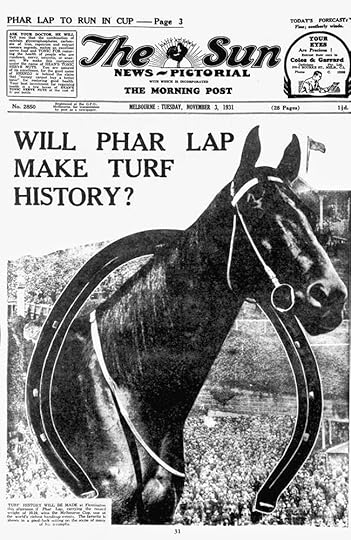




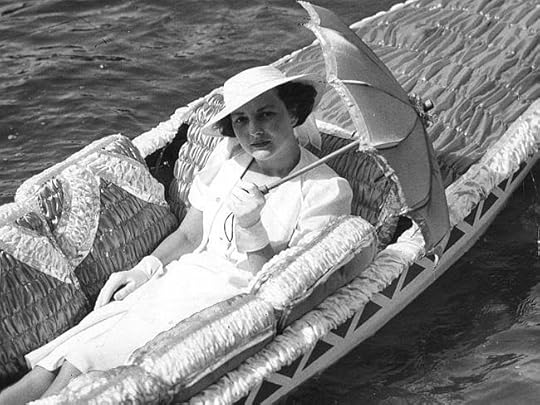
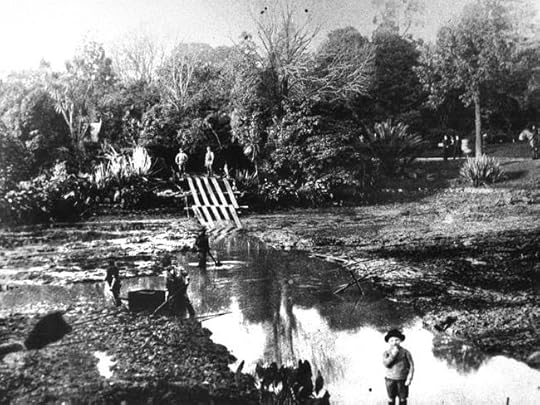
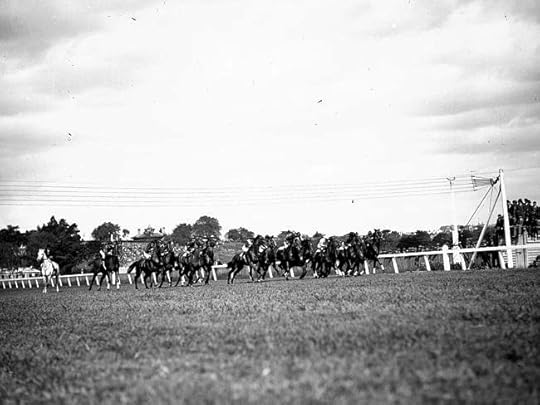


Clancy's comment: Mm ... Did you notice the way people dressed? Did you see the sawdust on the floor of the butcher's shop? Amazing stuff, eh?
I'm ...

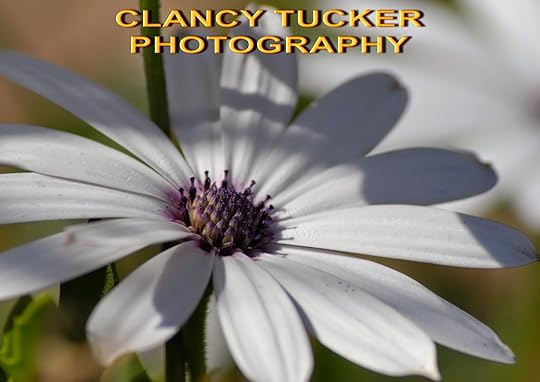
Published on June 21, 2015 04:17
June 20, 2015
21 June 2015 - CRAZY SIGNS - TAKE NOTICE

CRAZY SIGNS - TAKE NOTICE
G'day folks,
Again, I offer some weird and wonderful signs found around the world.




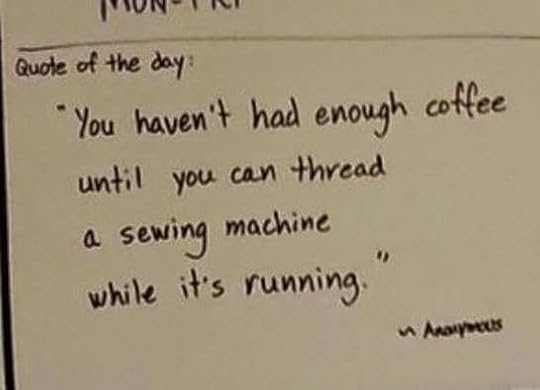








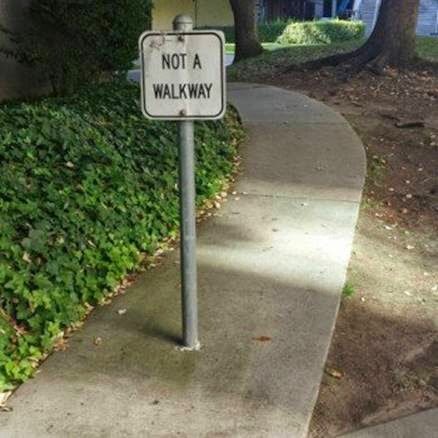


Clancy's comment: Mm ... Interesting.
I'm ...


Published on June 20, 2015 03:03
June 19, 2015
20 June 2015 - BRITISH SLANG

BRITISH SLANG
G'day folks,
Time for some more British slang. Let's see if you know any of these terms:
C of E - The Church of England. Our official protestant church - of which the Queen is the head.
Chat up - To chat someone up is to try and pick them up. If you spotted a scrummy girly in a bar you might try to chat her up. Or a girl might try and chat up a chap!
Cheeky - "Eee you cheeky monkey" was what my mother said to me all the time when I was a kid. Cheeky means you are flippant, have too much lip or are a bit of a smart arse! Generally you are considered to be a bit cheeky if you have an answer for everything and always have the last word. My licence plate on my MX5 (Miata in American) was CHEEKY, which most Texans thought was something to do with bottoms - wrong!!
Cheerio - Not a breakfast cereal. Just a friendly way of saying goodbye. Or in the north "tara" which is pronounced sort of like "churar".
Cheers - This word is obviously used when drinking with friends. However, it also has other colloquial meanings. For example when saying goodbye you could say "cheers", or "cheers then". It also means thank you. Americans could use it in English pubs, but should avoid the other situations as it sounds wrong with an American accent. Sorry!
Cheesed off - This is a polite way of saying you are pissed off with something.
Chin Wag - This is another word for a Chat. You can probably tell why!
Chinese Whispers - This a good one. It refers to the way a story gets changed as is passes from one person to the next so that the end result may be completely different from what was originally said. Sound familiar?
Chivvy along - When I'm standing patiently in the checkout queue at Tesco I like to chivvy along the old ladies in front of me. If only they would stop fannying aroundand hurry up!
Chuffed - You would be chuffed to bits if you were really pleased about something.
Clear off! - This expression brings back memories of being a kid and stealing apples from people's gardens. Sometimes we would get caught and some old bloke would come out and shout "oi clear off you lot". It basically means get lost.
Cobblers - I have heard people say "what a load of cobblers" more than once. Maybe that's because I talk so much rubbish. An equivalent would be what a load of bollocks. It means you are talking out of your butt and has nothing to do with any kind of dessert! Derived from the cockney rhyming slang where Cobblers Awls = Balls!
Cock up - A cock up means you have made a mistake. It has nothing to do with parts of the male body.

Cockney rhyming slang - There are lots of words that make up cockney rhyming slang. These are basically rhyming words like "butchers hook" which means "look". If you are in London and you hear someone talk about a Septic they are probably talking about you - because it's short for "Septic tank" which equals "yank", which is our word for an American. How do you like that!
Codswallop - Another one I heard a lot as a kid - usually when I was making up excuses for how the window got broken or why my dinner was found behind the sofa. My Dad would tell me I was talking a load of codswallop. American kids might be talking baloney under the same circumstances.
Cor - You'll often hear a Brit say "cor"! It is another one of those expressions of surprise that we seem to have so many of. It will sometimes be lengthened to "cor blimey" or "cor love a duck", depending on where you are. "Cor blimey" is a variation of "Gawd Blimey" or "Gor Blimey". They are all a corruption of the oath "God Blind Me".
Cracking - If something is cracking, it means it is the best. Usually said without pronouncing the last "G". If a girl is cracking it means she is stunning.
Cram - Before a big exam you would be expected to cram. This simply means to study hard in the period running up to the exam.
Crap - The same word in both countries - but less rude here. I loved watching Brits being interviewed on US chat shows and embarrassing the interviewer when they said something was "total crap".
Crikey - Another exclamation of surprise. Some people say "Crikey Moses".
Crusty dragon - A booger. One of the really crispy ones.
 Clancy's comment: Gorblimey, mate. Hope these did not cheese you off.I'm ...
Clancy's comment: Gorblimey, mate. Hope these did not cheese you off.I'm ...

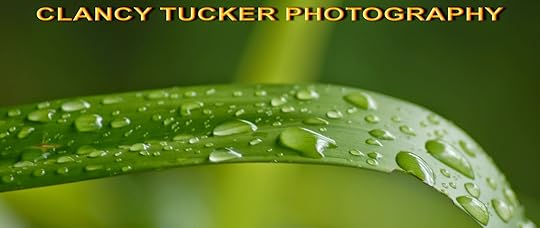
Published on June 19, 2015 03:45
June 18, 2015
19 June 2015 - PABLO PICASSO
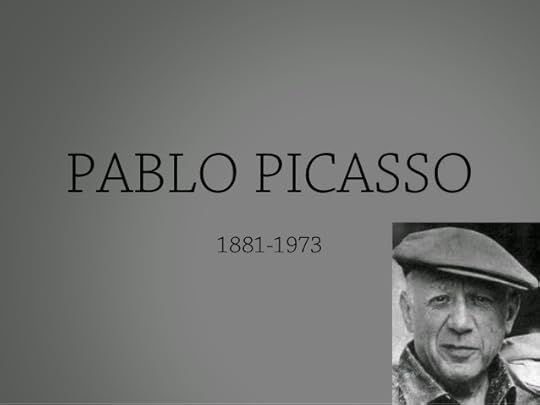
PABLO PICASSO
G'day folks,
Welcome to the life of a famous artist.
Pablo Picasso (1881 – 1973) Spanish painter, sculptor, ceramacist and poet. One of the founders of cubism and one of the most influential artists of the Twentieth Century
“Art washes away from the soul the dust of everyday life.”
– Pablo Picasso
Pablo Picasso was born in Malaga, Spain in 1881 to a conventional artistic family. From an early age he displayed great talent for painting and began displaying his work from the age of 14. To further his artistic aspiration he left Spain for Paris where he became part of a new avant-garde movement of art.
“When I was a child my mother said to me, ‘If you become a soldier, you’ll be a general. If you become a monk, you’ll be the pope.’ Instead I became a painter and wound up as Picasso.”- Pablo Picasso
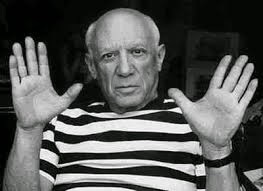
His early artistic career went through various states. One of the first states was known as the ‘Blue Period’ In his late teens his paintings were dominated by different shades of blue; they were also often melancholic. This included a famous self-portrait where Picasso looked much older than his 20 years.
By 1907, Picasso had developed a new form of painting known as ‘cubism’ This involved capturing the essence of the subject on the canvas but exaggerating certain features; typical of this period is the painting ‘Les Demoiselles d’Avignon’ – it is picture depicting five prostitutes in a brothel. It is an eye catching and original exploration of modernism in art.

In the 1920s and 30s Picasso concentrated on more classical works of art. He became interested in depicting the human form in the style of neo-classical. To some extent, he was influenced by artists such as Renoir and Ingres, although he always retained a very unique and individual expression.
Picasso had an instinctive and natural compassion for those exposed to suffering, especially if it was as a result of injustice. His natural sympathy and desire for equality led him to join the French Communist party. During the Spanish civil war he supported the Republicans and nursed a fierce hatred of Franco and what he did to Spain.
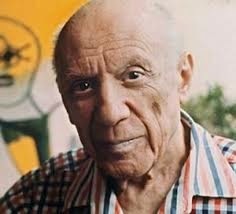
Pablo Picasso and Guernica
One of Picasso’s most famous paintings was his mural of the Guernica bombing. The Guernica bombing was carried out by Italian and German planes and involved the carpet bombing of civil areas. Its objectives seemed not so much military as aiming at destroying civilian resistance and Basque identity.
The bombing of Guernica was a significant development in modern warfare as it showed a new capacity for extending the horrors of warfare to the civilian population. The bombing became international news through the English journalist George Steer. However, it was the painting by Picasso that helped to immortalize the tragedy as a key event in the Twentieth Century.
Picasso was so enraged with Franco that he never allowed the painting to go to Spain during Franco’s lifetime. It eventually reached Spain in 1981. Picasso was well aware of a political dimension to art.
“What do you think an artist is? …he is a political being, constantly aware of the heart breaking, passionate, or delightful things that happen in the world, shaping himself completely in their image. Painting is not done to decorate apartments. It is an instrument of war.”

Another key painting of Picasso was his simple bird drawing a symbol of peace. Picasso donated it the Soviet backed World Peace Congress of 1949. It was rather sad that the Stalinist ideology of Communism betrayed the aspirations of peace loving Socialists like Picasso.
Abundant in artistic inspiration, Picasso enjoyed worldly life to the full. He enjoyed a string of mistresses, good food and wine. He died at the age of 91.

Clancy's comment: Sounds like he had a very full life. Why not, eh?
I'm ...


Published on June 18, 2015 03:47
June 17, 2015
18 June 2015 - ODD PHOTOGRAPHY

ODD PHOTOGRAPHY
G'day folks,
Here is something different to brighten your day. Brandon Kidwell, a financial analyst and photographer living in Florida, finds himself passing time with a unique hobby. When he's not spending time with his wife and three children, he's creating thought-provoking double exposure images. Through his photo series, "Wisdom For My Children, Life Lessons Through Photos," Kidwell aims to convey wisdom and strong emotional concepts that take many people a lifetime to learn.




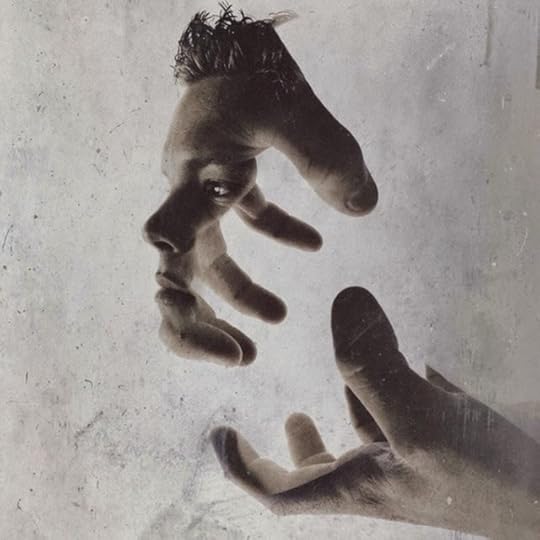
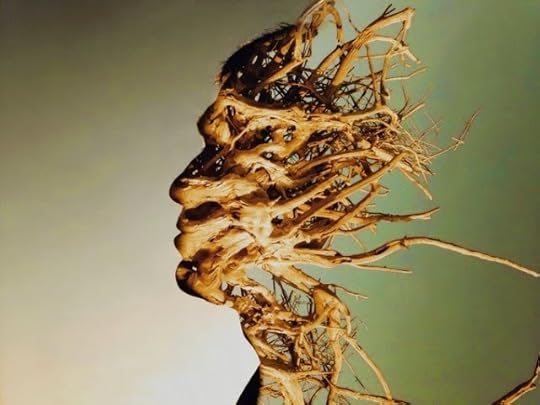


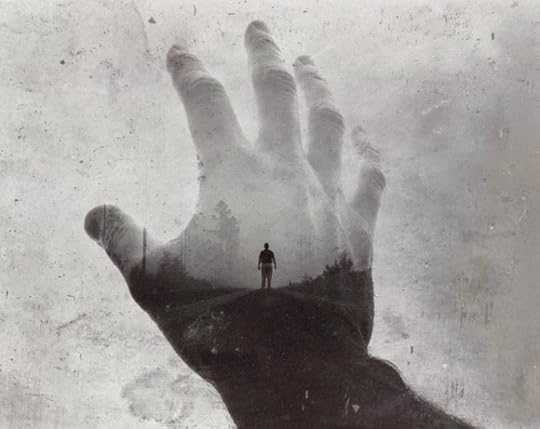









Clancy's comment: Very clever.
I'm ...


Published on June 17, 2015 05:11
June 16, 2015
17 June 2015 - FAIRFIELD WRITERS GROUP
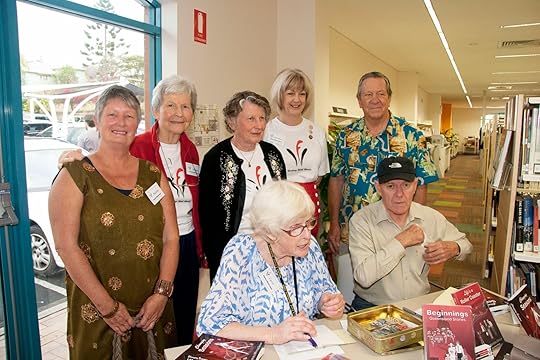
FAIRFIELD WRITERS GROUP
G'day folks,
Today, I present my first guest writers group - The Fairfield Writers Group from Queensland, Australia. Wow, what an industrious group this is ...
1. TELL US A LITTLE ABOUT YOUR WRITERS GROUP AND HOW IT BEGAN.
Fairfield Writers Group was formed in 2005 with the aim, through friendship, fun and education and constructive critiquing, of fostering and developing creativity and local writing talent, and building community appreciation of writing and writers.
We started with a few people gathering in the Fairfield library. After a number of meetings, we decided to firmly establish our Fairfield Writers Group. To that end we designed our own logo complete with the slogan 'Working with Words'.
We also designed colourful posters and pamphlets to further awareness of our activities and attract more people.

We set up a blog, and later created our own website at www.fairfieldwritersgroupqld.org.

2. HOW MANY MEMBERS IN YOUR GROUP, AND WHAT IS THE GENDER RATIO?
Member numbers fluctuate a great deal. Some people attend a few meetings, then, stay away. Though some of them may return to us after several months' absence.
We have about 30 registered members -- about 60% ladies and 40% men.
3. IS THERE ONE PERSON IN CHARGE, OR DO YOU COLLECTIVELY WORK TOGETHER?
We work together, taking turns at chairing meetings. Volunteers willingly act as key contacts, handling inquiries, managing our website and treasury, and setting up group exercises.
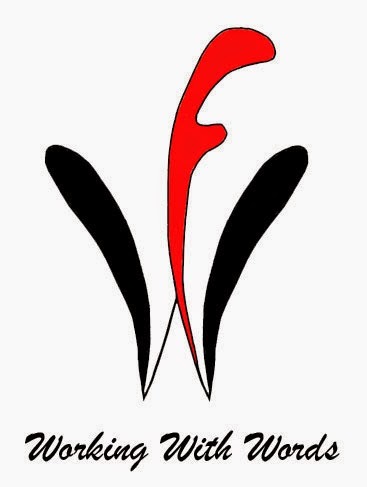
WHAT DO YOU ENJOY MOST ABOUT BEING IN A WRITERS GROUP?
The camaraderie, and the knowledge that there is always someone available to offer well-meaning advice, emotional support, differing perspectives, and constructive suggestions for improving writing.
4. WHAT IS THE HARDEST THING ABOUT BEING IN A WRITERS GROUP?Learning to critique constructively and to accept criticism that isn't always as tactful as it might be, and is often too valid for comfort.
5. WHAT WERE THE MEMBERS IN A PAST LIFE, BEFORE THEY JOINED YOUR GROUP?
Member backgrounds vary widely. We have a former journalist, school teachers, an accountant, a writer of technical documentation and courseware for computer software, drafts woman, boiler maker/rigger, executive assistant, house godesses
6. WHAT IS YOUR GROUP’S GREATEST WRITING ACHIEVEMENT?
Three story collections published
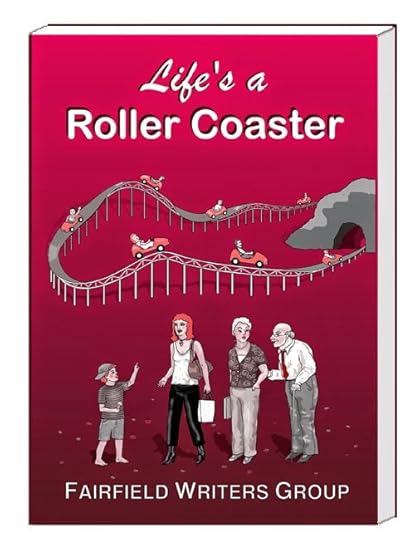
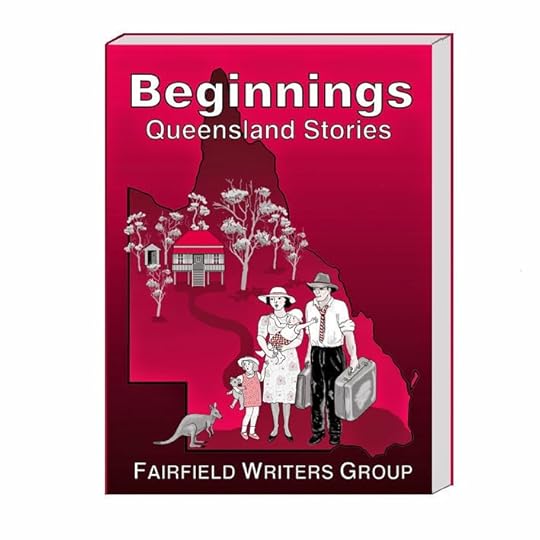
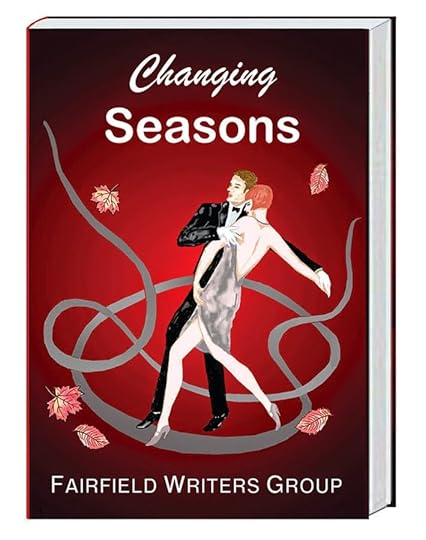
and another one, Crime Stories, being published right now, for launch on May 30, 2015.
We run Anthology projects periodically, to give members the opportunity to see their work in print and to learn about the processes of submission, publication and marketing. The programs we pursue to develop and publish short story collections involve months of intense mentoring to help members develop short stories to a publishable standard.
7. WHAT ARE EACH OF YOU WORKING ON AT THE MOMENT?
Various members of the group are involved in writing historical fiction, crime, women’s fiction, humour, children’s stories, philosophy and family histories.
8. WHERE DO YOU MEET, AND HOW OFTEN?
Our group meets twice monthly in Fairfield Library. Meetings begin at 10:30 am and usually end at approx. 12:30. Many participants then lunch together in a nearby cafe.
On the second Saturday of the month, we meet to critique set assignments and study writing techniques. On the fourth Saturday of the month, a group gathers to critique extracts from short stories or novels individual members are working on.
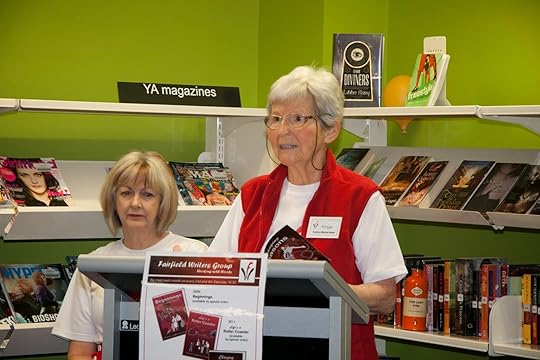
9. DO YOU HAVE ANY TIPS FOR OTHERS WHO MAY BE THINKING OF JOINING A WRITERS GROUP?
Do it! If you can find a well-organized group of friendly, supportive writers, it is a great way to improve your writing skills and build confidence, as well as a rewarding social experience.
10.DO ANY OF YOU SUFFER FROM WRITER’S BLOCK?
Yes – from time to time
11.DO SOME MEMBERS WORK COLLABORATIVELY ON A PROJECT?
Yes. When we do short story collections, participants collaborate to mentor each other and edit all stories in the collection.
12.WHAT’S THE GREATEST COMPLIMENT YOUR GROUP HAS RECEIVED?
High commendations from reputable sources
13.HAS YOUR WRITERS GROUP PUBLISHED ANYTHING?
Yes. We have published a series of 3 Anthologies: Beginnings: Queensland Stories (2009); Life's a Roller Coaster (2011); and Changing Seasons (2013)
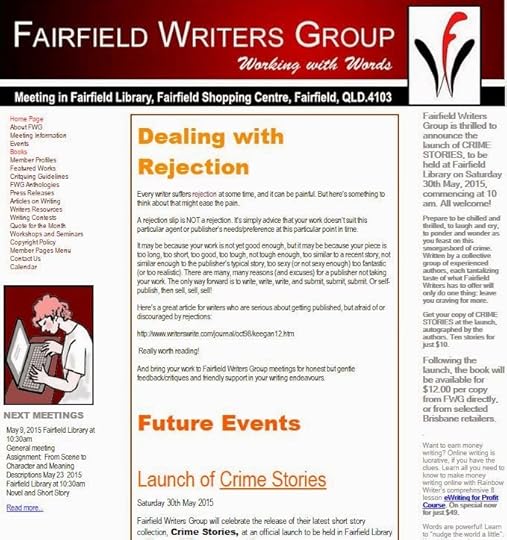
14.ANY FUTURE PUBLICATIONS PLANNED?
We are currently finalizing arrangements to publish Crime Stories, a collection of 10 stories by six FWG authors. Crime Stories will be launched on May 30, 2015, in the Fairfield Library, commencing at 10 am.

15.WHAT ARE YOUR GROUP’S PLANS FOR THE FUTURE?
We are planning a weekend Writer's Retreat to be held in September 2016 at Hastings Point, NSW.
We will also continue to produce story collections, giving members further opportunities to work cooperatively, learn about the submission and publishing processes and book marketing, and see their work in print.
16.WHAT HAS BEEN YOUR GROUP’S BIGGEST FRUSTRATION?
Dealing, on rare occasions, with members who wanted the benefits of project participation but were unwilling to contribute fairly and abide by basic rules, or who were unwilling to support the group's objectives.
17.DID YOU EVER THINK OF QUITTING THE GROUP?
One of our members quit after relocating interstate, but nevertheless still travels to attend our meetings once a month.
18. HOW WOULD YOU DEFINE ‘SUCCESS’ AS A WRITERS GROUP?
Sucessful publications, hard-core of regular members and constant improvement in the writing and writing output of members
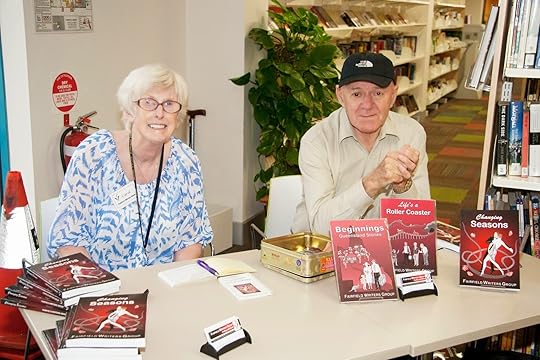
19. WHAT’S YOUR ULTIMATE DREAM?
Recognition of writing by a wider audience. Publication of best sellers.
20. ARE ANY MEMBERS OF YOUR GROUP PUBLISHED AUTHORS IN THEIR OWN RIGHT?
Yes. Several members have published books, which we list in the back of Crime Stories.
Carol Jell has published children's stories, Maddie and Mackie Stories, and a book of poetry, available from http://www.lulu.com/spotlight/goldieinoz
Helga Parl has published Pixels, a collection of short stories.
Joe Sheridan has published a historical novel, A Roman Boy, available from www.inspiringbookshop.com
Lorraine Cobcroft has published a children's book, Melanie's Easter Gift, and a biographical work of social history (creative non-fiction) titled The Pencil Case (both available from www.rainbowriter.com or on Amazon.) Lorraine is currently finalizing arrangement to publish Mortgaged Goods, a work of women's fiction.
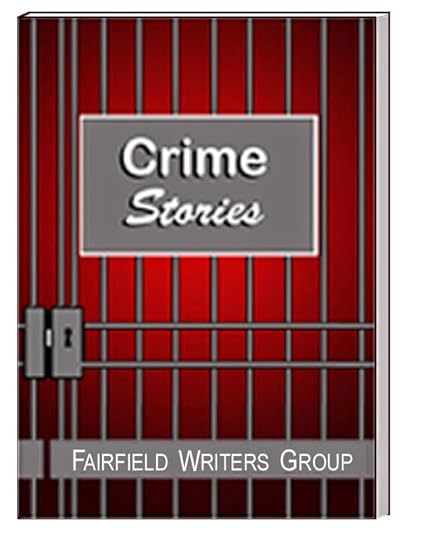
21. ANYTHING YOU’D LIKE TO ADD?
Our program incorporates organized study using assignments created by members, sourced from the Internet or provided by courseware suppliers. Each assignment is accompanied by explanatory articles on a particular writing topic, eg. characterization, writing dialogue, setting the scene, etc. Each member studies the article and examples, then writes a piece up to 1000 words demonstrating their understanding of the technique. These pieces are circulated among the group and critiqued by each member in turn, following set critiquing rules designed to ensure honest, helpful, supportive and encouraging feedback that builds member confidence.
We often ''pair up'' outside meetings to exchange writing pieces and critique each other's work by email. Membership in the group has led to some rewarding friendships.
The group is grateful to Brisbane City Council and Local Councillor Nicole Johnson for their generous support for our activities, and to the staff at Fairfield Library who provide meeting facilities and extensive support and assistance to stage workshops, seminars and product launches.

Clancy's comment: Wow. This writers group is not letting the grass grow under its feet. Well done, guys. I wish you all tremendous success; personally, and as a group.
I'm ...


Published on June 16, 2015 04:18
June 15, 2015
16 June 2015 - ALFRED DEAKIN
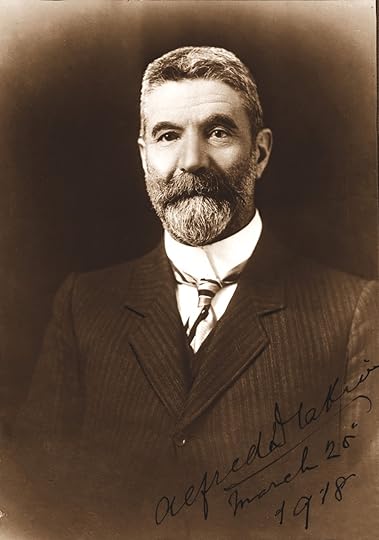
ALFRED DEAKIN
G'day folks,
Alfred Deakin, Australia’s second Prime Minister, was also the fifth and the seventh. He was in office three times in the first ten years of Federation. Often referred to as ‘the constructor’, his work in building soundly on the nation’s constitutional foundations is evident a century later.
Perhaps the finest speaker in the Australian parliament’s first century, Deakin’s love of learning informed his political life. Handsome and intelligent, his courteous manner earned him the nickname ‘Affable Alfred’.
Alfred Deakin was born on 3 August 1856, in Collingwood, Melbourne. His parents, William and Sarah Deakin, emigrated from England in 1849. Their first child, Catherine, was born shortly afterwards.
When he was seven Alfred Deakin went to Melbourne Church of England Grammar School. At sixteen he began studying law at the University of Melbourne. He was a keen member of the university’s debating club and other societies promoting radical thought, including spiritualism. The sixteen-year-old was also the editor of a spiritualist paper. When he became a barrister in 1878, he had already written a play (Quentin Massys) and published a long book, A New Pilgrim’s Progress. His law career was slow to grow and for several years he earned money writing for a leading Melbourne newspaper, The Age, after meeting its editor, David Syme, in 1878.
Syme was influential in the development of his protégé’s ideas, prompting Deakin to change from a belief in free trade to become a protectionist. Syme also helped him to win the rural seat of West Bourke in the Victorian parliament in 1879. Deakin resigned in his maiden speech on 8 July 1879, claiming irregularity in the poll. He lost the subsequent by-election, but was re-elected in July 1880 and held the seat for ten years.
Alfred Deakin and Elizabeth Martha Anne (Pattie) Browne, a fellow spiritualist, were married in 1882. They lived with Deakin’s parents for the next five years. In 1887 they moved with their two small daughters, Ivy and Stella, to their brand-new house, ‘Llanarth’, in Walsh Street, South Yarra. Their third daughter, Vera, was born there in 1891.
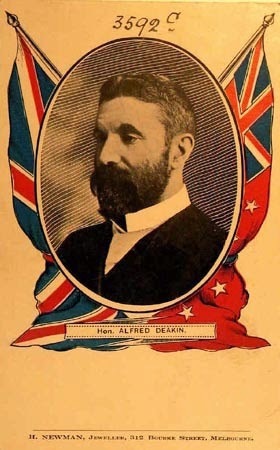
Deakin was an impressive man – dark, handsome and tall, with a rich voice and a keen mind. He became Commissioner for Public Works and Water Supply in 1883, and Solicitor-General and Minister of Public Works the following year. In 1885 Deakin secured the passage of the colony’s pioneering Factories and Shops Act, enforcing regulation of employment conditions and hours of work.
In 1887 Deakin led Victoria’s delegation to the Imperial Conference in London. He was a young colonial politician who made a strong impact arguing forcibly for more favourable terms in the colonial naval agreement. With Queensland’s delegate, Samuel Griffith, he confronted the British Prime Minister, Lord Salisbury, on colonial interest in the New Hebrides.
Deakin was a passionate campaigner for irrigation. In 1884 he chaired a royal commission on irrigation and, on an inspection tour to California, met George and William Chaffey. The Chaffey brothers subsequently demonstrated their novel irrigation techniques at Mildura in 1886, when Deakin was Minister for Water Supply. Deakin also introduced a radical bill into the Victorian parliament that, if it had passed, would have made all natural waters in the colony publicly owned and enabled the construction of irrigation works. In 1890, he travelled to Ceylon (Sri Lanka) and India, and published an account of South Asian irrigation in 1893. By that time, however, Deakin’s paper generated little interest since both drought and economic depression had struck Australia’s eastern colonies.
After the fall of the government in October 1890, Deakin remained a backbencher throughout the 1890s. Like many others, Deakin lost heavily in the 1893 financial collapse and had to practise law to supplement his salary and repay his debts. His frustration that the competitive divisions between the colonies prevented a united front at the 1887 Imperial Conference fuelled his support for Federation throughout the 1890s.

In 1890 Deakin was Victoria’s delegate to the Australasian Federal Conference, held in Melbourne, which agreed to hold an intercolonial convention to draft a federal constitution. The following year, Deakin was the colony’s delegate to this meeting, the first National Australasian Convention held in Sydney, which produced a draft Constitution Bill.
Deakin became Victoria’s most prominent federationist. His splendid oratory enlivened meetings throughout Victoria, from the annual conference of the Australian Natives Association in 1893, to the public meetings leading up to the Federation referendum in June 1898. Deakin was founding chairman of the Federal League of Victoria in 1894, and attended the Federal Council meeting in Hobart in 1896.
In 1897 he was a delegate to the second Australasian Federal Convention, which opened in Adelaide in March 1897 and concluded in Melbourne in January 1898.
Deakin and the Victorian Premier, George Turner, ensured the Constitution Bill passed the Victorian parliament and could be put to the colony’s voters at an 1898 referendum. South Australia, Tasmania and Victoria were the first colonies to pass Federation referendums. Between April and September 1899, successful referendums were held in all colonies, except Western Australia, enabling the Bill to be submitted to the British parliament.
In 1900, Deakin was a member of the delegation led by Edmund Barton to lobby in London for the successful passage of the Australian Constitution Bill through the British parliament. The joy of the delegates when the Bill was passed in June, was exceeded only by the triumph in every colony when the news was received that it had become law with Queen Victoria’s assent on 9 July 1900.Before the inauguration of the nation on 1 January 1901, Deakin played a strategic role in undoing the ‘Hopetoun blunder’ – the first Governor-General’s failure to select Edmund Barton to be the first Prime Minister. Deakin, Victorian Premier George Turner, and Deakin’s mentor David Syme, were the major force in ensuring, after a tense few days of negotiation, that Lord Hopetoun reversed his choice of William Lyne.
On Christmas Day 1900 Barton chose his ministers and, on 1 January 1901, the Governor-General administered the oaths of the first ministery and Alfred Deakin became Australia’s first Attorney-General.
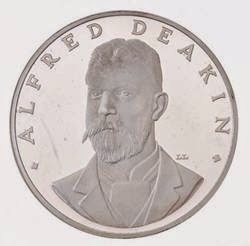
After the first federal elections in March 1901, Deakin served as leader of the House as well as Attorney-General. He had a heavy workload throughout the first parliament, with its mass of machinery bills as well as policy legislation on immigration. Robert Garran took major responsibility for drafting legislation, though Deakin himself was substantially responsible for the Public Service and Conciliation and Arbitration bills.
Deakin had a keen intelligence and great capacity for hard work, and he was persuasive and admired. His even temper and pleasant manner earned him the nickname ‘Affable Alfred’. When Deakin walked to Parliament House from his home in South Yarra, he would be waylaid by colleagues eager for his conversation, not on politics, but on literature, philosophy, and the other interests that made him a wide-ranging reader and thinker.
On 18 March 1902, Deakin made the speech considered among the finest of his parliamentary career, and indeed now rated among the finest speeches of the parliament’s first century. The subject was the Judiciary Bill, which he called ‘the foundation of Commonwealth law’. Deakin had ensured that Samuel Griffith had a major role in drafting the Bill and, as Attorney-General, Deakin introduced it in the House. Among those saluting the eloquence of his three-and-a-half-hour speech were his friends Richard O’Connor and artist Tom Roberts – though Roberts confessed he had not stayed the entire course.
With the support of Edmund Barton and Isaac Isaacs, Deakin argued forcefully against delaying the establishment of the High Court. He viewed the Court as the essential third pillar of the federal structure once the parliament and public service were in place. The Bill was not passed until September 1903 and, in a compromise with budget-wary opponents, the High Court bench was reduced from five to three judges.
In 1902 Deakin served as Acting Prime Minister from May to September, while Edmund Barton was overseas for the coronation of King Edward VII and Queen Alexandra. Atlee Hunt, a Sydney protégé of Barton and Secretary of the Department of External Affairs, took a leading role in dealing with the prime ministerial business. During Barton’s absence, Hunt and Deakin developed the working relationship that extended over the next decade, during Deakin’s three terms as Prime Minister between 1903 and 1910.
Deakin was Leader of the Opposition from April 1910 until ill-health forced his resignation on 20 January 1913. Joseph Cook replaced him as leader of the Liberal Party that Deakin had founded in 1909. Deakin retired from politics when the parliament was dissolved in May 1913 and Joseph Cook became Prime Minister after the general election on 31 May 1913.
Deakin participated little in public life after his retirement, though he and Pattie Deakin made an official trip to the International Exposition in San Francisco in February 1915, held to celebrate the opening of the Panama Canal. Suffering increasing ill-health, including a severe progressive memory loss that had first afflicted him in 1908, Deakin found his duties in San Francisco an ordeal.
The Deakins also travelled to London in 1916, returning via New York early in 1917. Deakin’s condition worsened and, in the notebook journals he had always kept, he wrote ‘My memory is but a little fiction’. In September 1919 he suffered a stroke and died on 7 October.
Deakin was given a state funeral, his coffin brought from his house in Walsh Street, South Yarra to Parliament House. It was taken from there in a silent procession through the city streets. He was buried in the St Kilda cemetery next to the graves of his parents.
Pattie Deakin died fifteen years later, on 30 December 1934. She was interred in her husband’s grave.
 Clancy's comment: An extraordinary career and life.
Clancy's comment: An extraordinary career and life.I'm ...

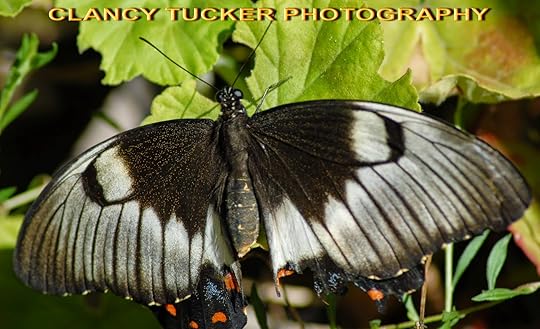
Published on June 15, 2015 03:45
June 14, 2015
15 June 2015 - CALLIGRAPHY
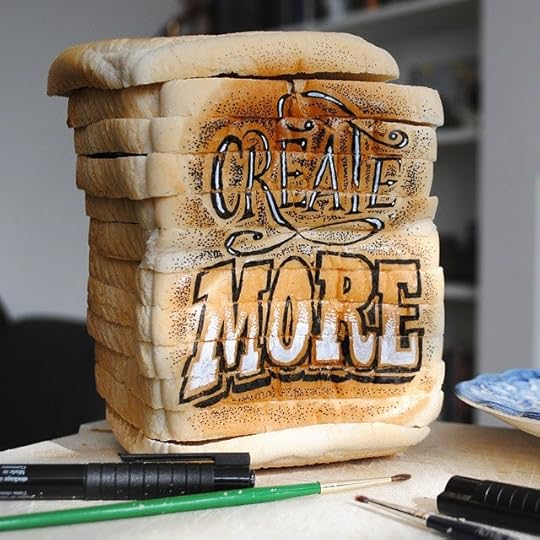
CALLIGRAPHY
G'day folks,
Ever done any calligraphy? I've tried and failed. What is art if it doesn't break boundaries? Rob Draper is an artist who is all about breaking the rules. Draper, an accomplished designer and illustrator, loves pushing boundaries for the sake of his work, and it really shows in these pieces.
Calligraphy is a beautiful form of writing that not everyone can do. It is truly an art form in and of itself. For some people, doing calligraphy on paper is hard enough, but Draper doesn't seem to be too satisfied with that canvas. His tastes in this area are quite unconventional, using food and various miscellaneous items to create these personal pieces of art.
That's right. When he's not doing freelance work online or teaching design, he's marking up just about anything he can get his hands on, and the results are absolutely incredible.




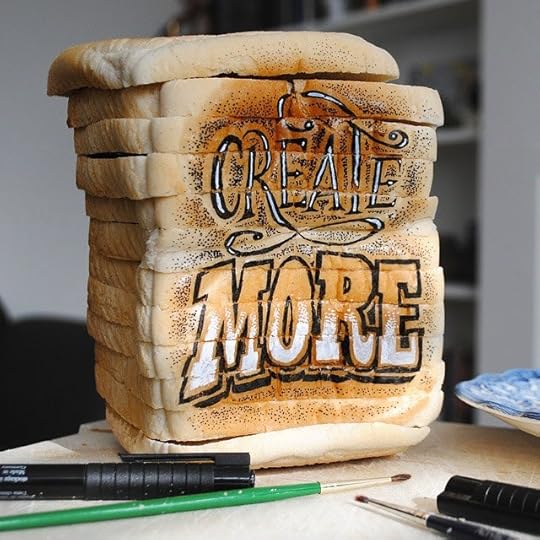

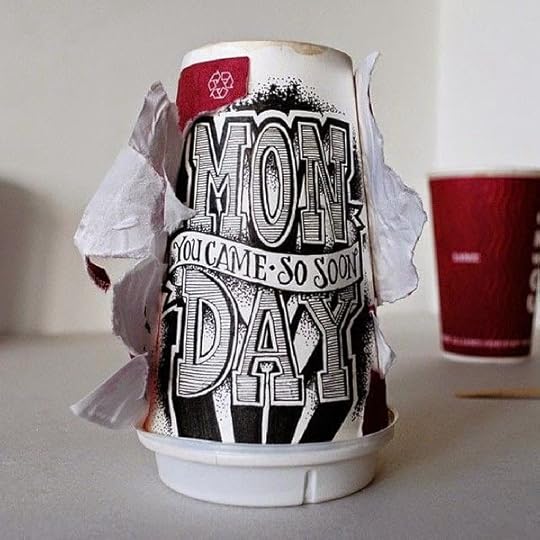

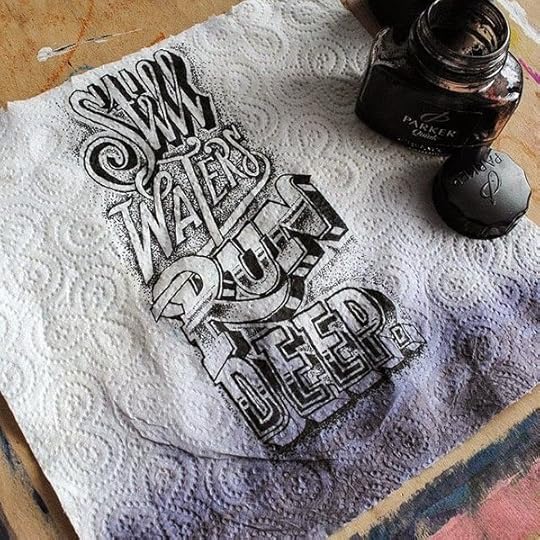
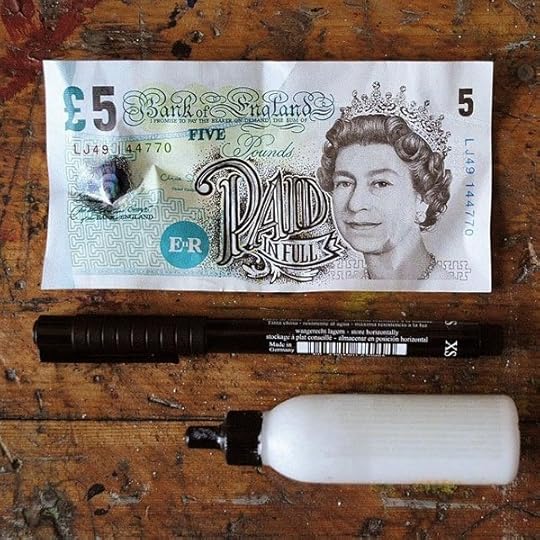
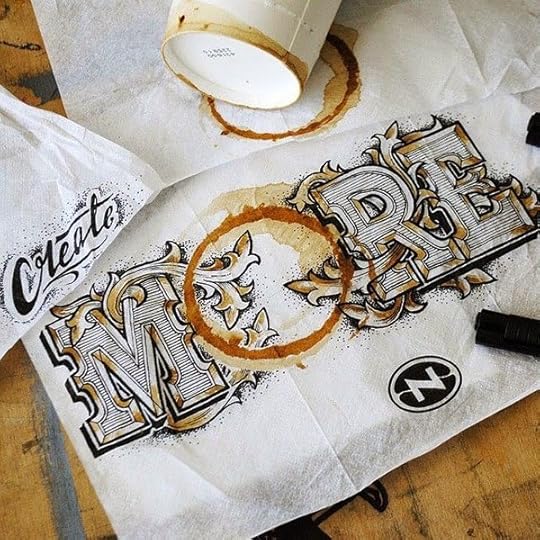



 Clancy's comment: Well, there ya go. What an interesting world we live in, eh? And, it's a world with a mass of creativity and ideas.I'm ...
Clancy's comment: Well, there ya go. What an interesting world we live in, eh? And, it's a world with a mass of creativity and ideas.I'm ...

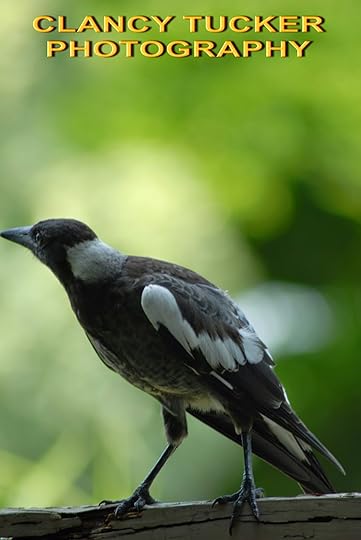
Published on June 14, 2015 05:28
June 13, 2015
14 June 2015 - CHARLES de GAULLE
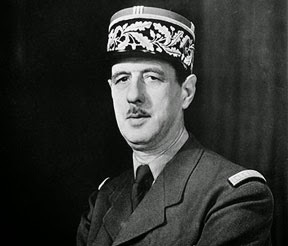
CHARLES de GAULLE
G'day folks,
Welcome to a famous French leader. Charles André Joseph Marie de Gaulle was a French general, resistant, writer and statesman. He was the leader of Free France and the head of the Provisional Government of the French Republic.
Charles de Gaulle (22 November 1890 – 9 November 1970) was a French general and statesman who acted as leader of the Free French during the Second World War. One of the most influential French politicians he helped found the Fifth Republic in 1958 and served as its first President from 1959 to 1969. He was a right wing conservative and was a keen French Nationalist. His brand of right wing conservatism is branded Gaullism.
“Whatever happens, the flame of the French resistance must not be extinguished and will not be extinguished. “
– Address June 18, 1940
Charles de Gaulle was born in Lille (Flanders) in 1890. His family was devout Roman Catholic and conservative. This brand of nationalism and conservative Catholicism influenced De Gaulle’s politics throughout his life.
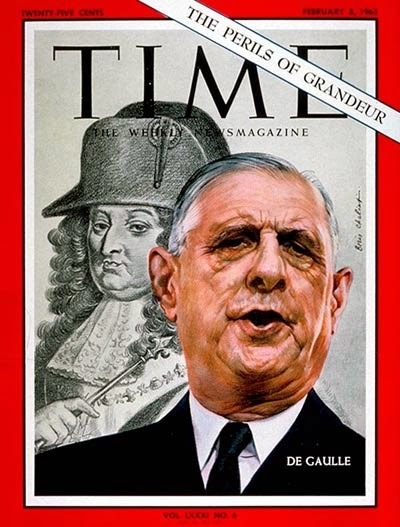
De Gaulle, studied in Paris and joined the military academy of St. Cyr. In 1913, he joined an infantry regiment commanded by Petain. During the First World War, De Gaulle was wounded on two occasions and was involved in the heavy fighting around Verdun. It was at Verdun, in 1916, that de Gaulle was captured by the Germans and spent the remainder of the war as a Prisoner of war – despite his repeated attempts to escape.
After the war, De Gaulle remained in the military and became interested in the new developments of military strategy. He came to believe the future of war would rest on highly mobile mechanized units – principally tank units backed up with air support. In 1934, he published a book ‘The Army of the Future’ which talked about the importance of this new form of fast moving militarised warfare. However, De Gaulle’s views were not popular with either the military or politicians. The French remained committed to the more static view of warfare characterized by the Maginot line and the trenches of the First World War. Combined with De Gaulle’s capacity to irritate senior officers, he was marginalised from the military and refused promotion. He also fell out with Petain over a 1938 book on ‘France and Her Army’
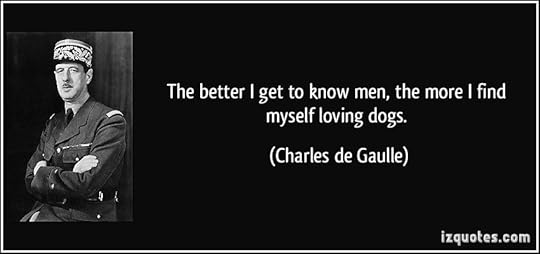
However, during the German invasion of France in 1940, De Gaulle was given command of a tank unit. At Caumont on the 28th May, 1940, his unit provided one of the few occasions where the German advance was stalled and briefly pushed back. However, lacking air support and overwhelmed by the superior German armed divisions, French fell into a humiliating retreat.
During the crisis, De Gaulle was briefly made Minister of War by French Prime Minister Paul Reynaud, But, after just six weeks of fighting, many French politicians, led by Petain, wanted to seek an armistice with the Germans. This led to the creation of Vichy France.
General Charles de Gaulle was the most senior army officer to reject the armistice – seeing it as a betrayal of France. He said in a proclamation, June 18 1940.
“France has lost a battle, but France has not lost the war.”
“Whatever happens, the flame of the French resistance must not be extinguished and will not be extinguished. Tomorrow, as today, I will speak on Radio London.”
Under threat of arrest he escaped to Britain where he became the leader and symbol of the Free French who opposed the German occupation.
Initially, Charles de Gaulle was a marginal figure, his radio broadcasts to France being picked up by very few. However, after the initial shock of defeat wore off, he became increasingly the focal point of the French resistance. His speeches were shared amongst the French people clandestinely listening to BBC broadcasts
Let us be firm, pure and faithful; at the end of our sorrow, there is the greatest glory of the world, that of the men who did not give in.
(Charles de Gaulle, July 14 1943)
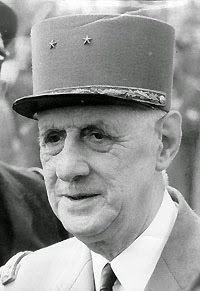
Despite divisions within the French resistance (especially with the Communist party) De Gaulle was able to unify the resistance movement in 1943, which maintained an uneasy truce until liberation in 1944.
In 1943, De Gaulle moved to Algeria where he formed the provisional government of France. This presumption of forming a government, annoyed the allies and the French were excluded from the D-Day operations. However, during the liberation of Paris, a small French unit was allowed to lead the drive onto the capital, helping to restore French pride in being part of France’s liberation.
After much persuasion, at the last minute, France was allowed to be one of the four major powers in the post war reconstruction of Europe. In November 1945, De Gaulle was unanimously elected the first leader of the new French government. He held this post until his resignation in 1946. After his resignation, formed his own political party the Rally of the French People (RFP) but it never attained electoral success and De Gaulle retired from politics.
However, during the Algerian crisis of 1958, De Gaulle was recalled to power. He was elected President and helped found the new constitution of the Fifth French republic. Despite being a strong nationalist, he agreed to give Algeria independence. This was seen as a betrayal by many in the military who had supported De Gaulle and were committed to defending Algeria. This led to numerous attempts on his life, though non were successful.
Back in power, De Gaulle wished to pursue an independent foreign policy, not aligned to either the US or UK. He took France out of NATO, created their own atom bomb and twice vetoed British entry into the European Economic Community.
The last years of his presidency were ones of great turmoil. Massive student protests and riots left the country de stabilised and in April 1969, he left office. He died shortly after on the 9th November.

Clancy's comment: Another man who led an interesting life. I wonder what they will say about us after we have gone. By comparison, not much I assume.
I'm ...

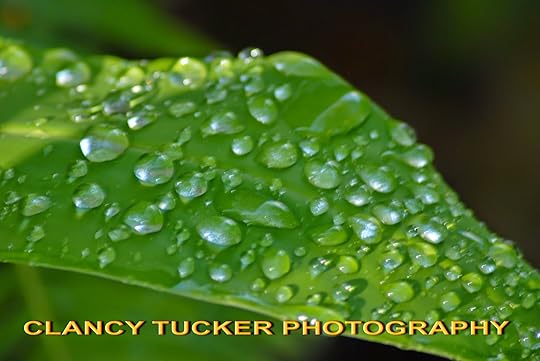
Published on June 13, 2015 02:25



